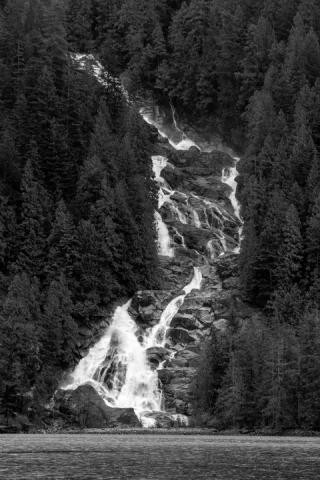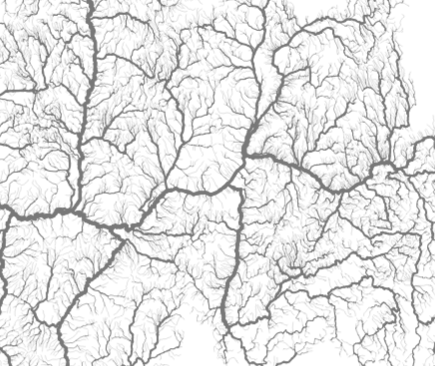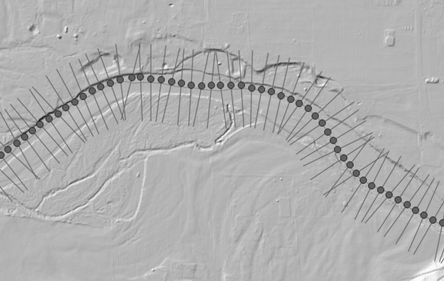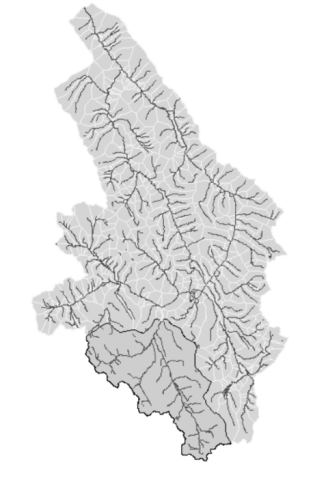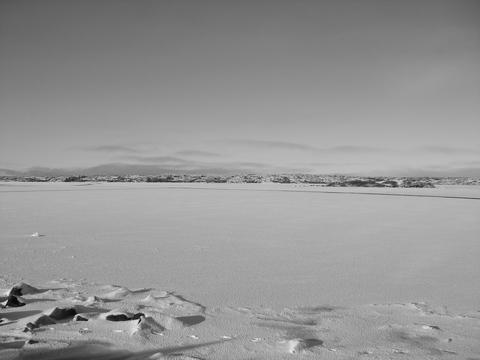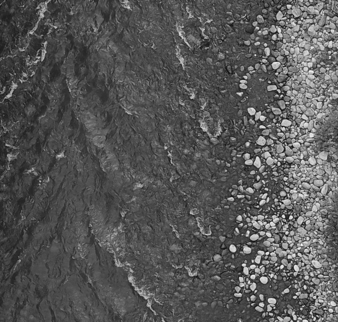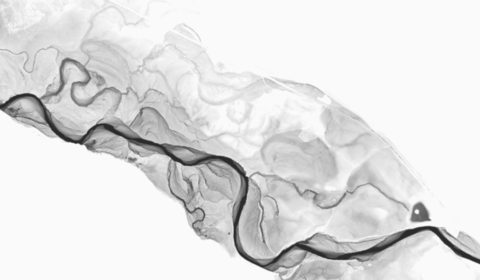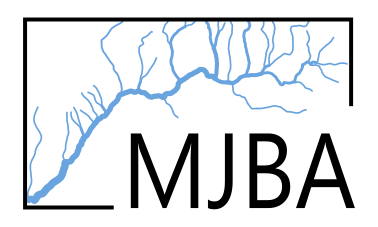Hydrological Modelling
Overview
Projecting stream flows in ungauged basins under future scenarios and quantifying changes to instream habitat
This service area broadly characterizes components of hydrology and hydrological modeling with linkages to stream flow, fish, and fish habitat. For convince this service area is split into general domains, each domain focuses on different applications and project types. Variations of some of these projects, programs, and analyses can be completed at a high-level as desktop a exercise, whereas others applications involve large teams of subject matter experts with field programs etc.
Hydrology Models to Forecast Stream Flows Under Future Scenarios:
- Objectives: Hydrological modelling generally involves forecasting stream flows into the future under different scenarios. These scenarios could include hypothetical restoration alternatives, climate change, water management decisions, and so on. The general goal is to estimate monthly stream flows, floods and low flows:
- Can we forecast stream flows for ungauged basins (near-term, long-term or seasonal averages)?
- How will a hydrograph change under future scenarios with climate change?
- How will changes to upland developments (i.e., land use) such as forestry, roads, agriculture, wildfires etc. change stream flows during critical seasons.
- Hypothetical "what ifs" for hypothesis testing, etc.
- Approach: Numerous hydrological models and tools exist for every application. My go-to approach is to use the collection of models available within the Raven Hydrological Framework. Other tools and applications can also support these projects and programs.
Hydraulic Models / Hydrodynamic Modelling:
- Objective: In larger creeks and rivers it becomes important to start thinking about instream habitat as a three dimensional surface of varying depths and velocities with features such as banks, bars, side channels, boulders etc. Hydrodynamic models breakdown a stream reach into nodes (or cells) to generate high-resolution simulations of water flowing through a stream. This information is then used to help us understand how a given input discharge
- Approach: Involves the use of mathematical and computational models to understand water flow dynamics, including aspects like flow velocity, water level changes, and sediment transport (River2D; HEC-RAS-2D).
Instream Flow and Environmental Flow Needs:
- Objective: Environmental flows are defined as the volume and timing of flows required to sustain proper functioning of aquatic ecosystems. These relationships are specific to each unique combination of location, season, species, life stage, activity etc.
- Approach: A series of well-documented policies and procedures have been developed to support these the operation and implementation of these programs.
- Common Tools and Applications: HEC-RAS | SEFA | HSI (Habitat Suitability Index) Curve Database
- Key References: Instream Flow Council Bibliography of Guidelines and References | 2004 BC Assessment Methods of Instream Flow | BC 2022 EFN Policy |
Measuring Stream Flow, and Systems for Realtime Reporting:
- Objective: The objective of hydrometric surveying is to obtain data on river discharge, stage, and/or velocity at one or more predefined locations. High-quality stage/discharge time series, collected under professional standards and practices, are worth their weight in gold. Stream discharge time series are foundational data inputs to all other modelling approaches described in this section. Stream flow data is also commonly used on its own (in the absence of any additional modelling) to guide water management decisions for fish and fish habitat.
- Approach: The other service area subdomains (described above) offer some lenience or opportunity for creative capital. However, hydrometric surveys require strict adherence to professional standards and practices. This helps ensure that the information is as accurate as possible and that data quality can be clearly communicated using predefined and well-documented standards. In British Columbia, the Resources Information Standards Committee (RISC) sets criteria for hydrometric data collection, review, grading, and sign-off procedures by qualified professionals. Failing to follow these standards can not only jeopardize monitoring programs but may also invalidate any subsequent hydrological modelling or reporting work linked to licenses/regulatory obligations.
- Key References: 2018 Manual of BC Hydrometric Standard V2 | WSC Levelling | WSC Measurement of Stage | WSC Stage Corrections | WSC Stage-Discharge Model Development and Maintenance | WMO Manual on Stream Gauging V1 Field Work & V2 Computation of Discharge | 2004 BC Assessment Methods of Instream Flow | 2014 US EPA Best Practices for Continuous
Monitoring of Temperature and Flow in Wadeable Streams
Go-To Resources for Modelling and Analyses:
- Hydrological Modelling:
- Raven Hydrological Framework: Robust and flexible hydrological modelling framework
- Stream Networks and Drainage Basins:
- BC Freshwater Atlas (BCFWA): Spatial streamlines and basins of BC
- Canada National Hydro Network (NHN): Spatial streamlines and basins of Canada
- CDEM: Canadian C-DEM 90m res API. Digital Elevation Model
- riverdist: Distance and stream network calculations
- streamgis: Collection of stream profile calculations
- SSN2: Spatial Stream Network Modeling
- BasinMaker: Hydrological networking and routing
- CLRH Canadian Network (Heron Hydrologic)
- Global Watersheds: Global upstream and downstream network delineation and watershed summaries (evapotranspiration, landcover etc).
- Climate Data and Tools:
- ClimateBC/ClimateWNA: Climate normals and projections in BC
- CaSPAr: Canadian surface prediction archive for weather
- PCIC Daily Historic: Daily historic climate and stream flow
- Daymet: Gridded estimates of daily weather (historic)
- ropensci.org::weathercan: Download historical weather data from ECCC
- Channel Geometry:
- rivr: Open-channel flow computation
- Time Series:
- Water Survey of Canada (WSC): Discharge and water level data
- CSHShydRology: Collection of functions used by Canadian hydrologists
- tidyhydat: Hydrometric data download from HYDAT
- fasstr: Analyze, Summarize, and Visualize Daily Streamflow Data
- hydroEvents: Extract Event Statistics in Hydrologic Time Series
- hydroTSM: Time Series Management and Analysis for Hydrological Modelling
- Landcover:
- MODISTools: MODIS time series generation
- NFIS Landcover: National Terrestrial Ecosystem Monitoring System for Canada
- LandTrendr: Remote sensing land cover change
- Global Water Surface Explorer: Global Water Surface Explorer
- Also see Global Watersheds.
- Lakes:
- SWOT - The Lake Surveyor: Lake volume and surface area
- lakemorpho: Lake Morphometry Metrics
... website content under development - check back again soon for updates ...
